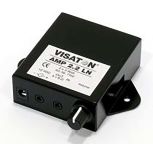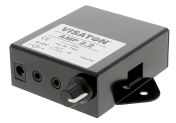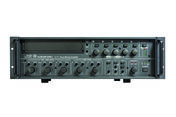Amplifiers
An amplifier, sometimes called a power amplifier or hi-fi amplifier, is an electronic device that takes a low power audio signal and reproduces it at a much stronger level. For example, the signal from a microphone or instrument is amplified to a level that is strong enough to drive speakers, sound systems or headphones. They can also provide power to passive speakers.In the most basic terms, amplifiers increase the power of a signal, making it stronger that the original input. Amplifiers can also provide power to passive speakers.Classes:• Class A Amplifiers conduct during the full cycle or have a conducting angle of 360 degrees. These amplifiers are the simplest and most common devices because of low signal distortion level. • Class B Amplifiers, unlike Class A, work for only half of each input cycle, which means they have a conducting angle of 180 degrees. In simple words, these amplifiers amplify only half of the input cycle. On paper, that probably sounds unusable, but in reality, it's quite different. A Class B Amplifiers consist of a positive and negative transistor, which run alternatively, amplifying the positive and negative cycle respectively. In the end this is combined to form a full output cycle.• Class AB is the mixture of both classes, so the conduction angle is somewhere around 180 and 360 degrees, commonly shown as 270 degrees.• Class C Amplifiers are the most efficient but have the lowest operating cycle and linearity. It is heavily biased and stays on for less than half of an input cycle. It has a conducting angle somewhere around the 90 degrees. This results in the high efficiency mentioned above but can also cause high distortion in the output signal. Class C amplifiers are usually not used as audio amplifiers. They can be used in certain radio frequency applications where efficiency is key. • Class D Amplifiers aren't always considered among the four mentioned above. They are a non-linear switching amplifier in which two transistors function as switches instead of linear gain devices. Class D amplifiers convert the analogue input signal into digital via pulse width modulation, pulse density modulation or something similar, before being amplified. The end result is a cycled output with high efficiency and gain, alongside minimal distortion. Although this type of amplifier was originally used to control motors, they are now used as audio amplifiers as well.








